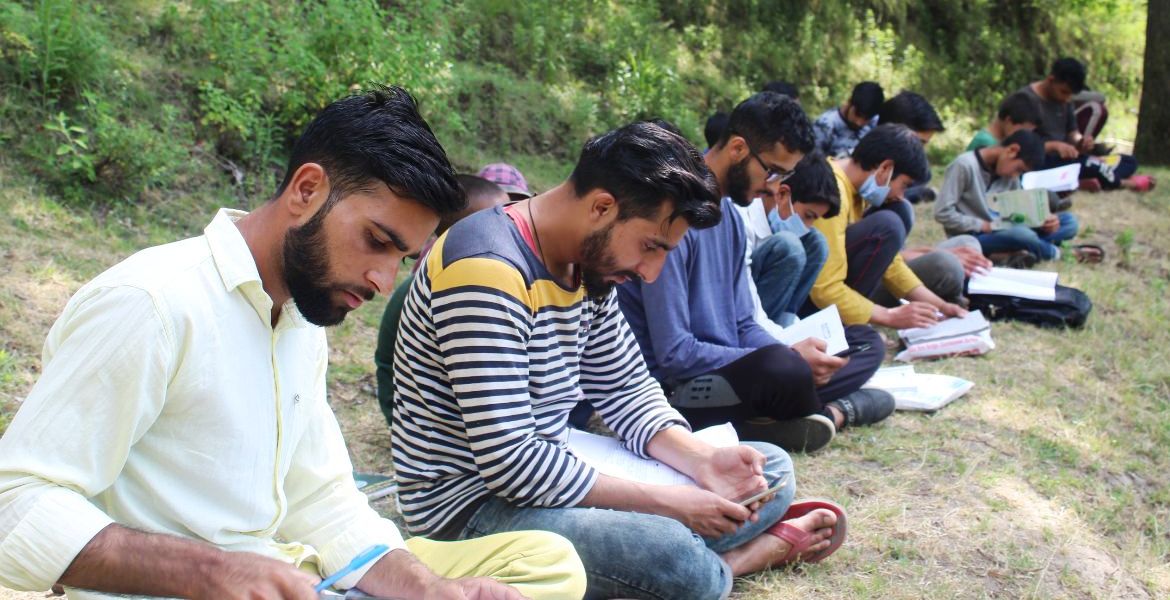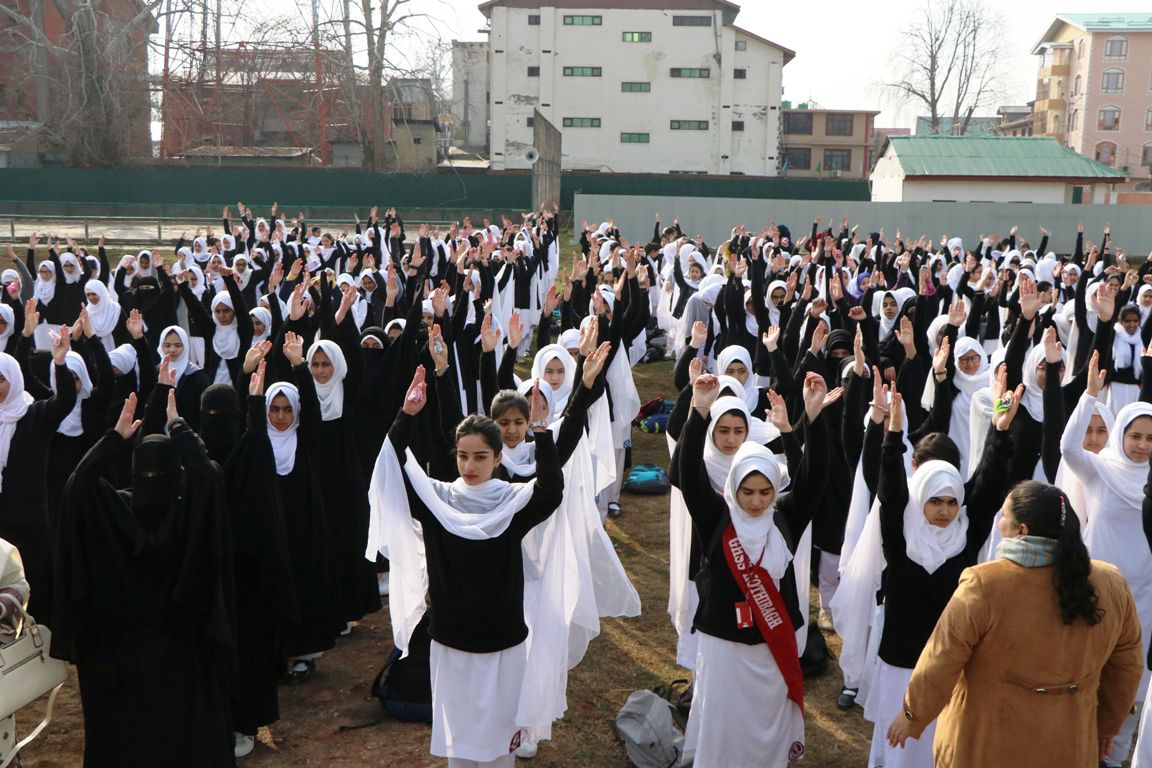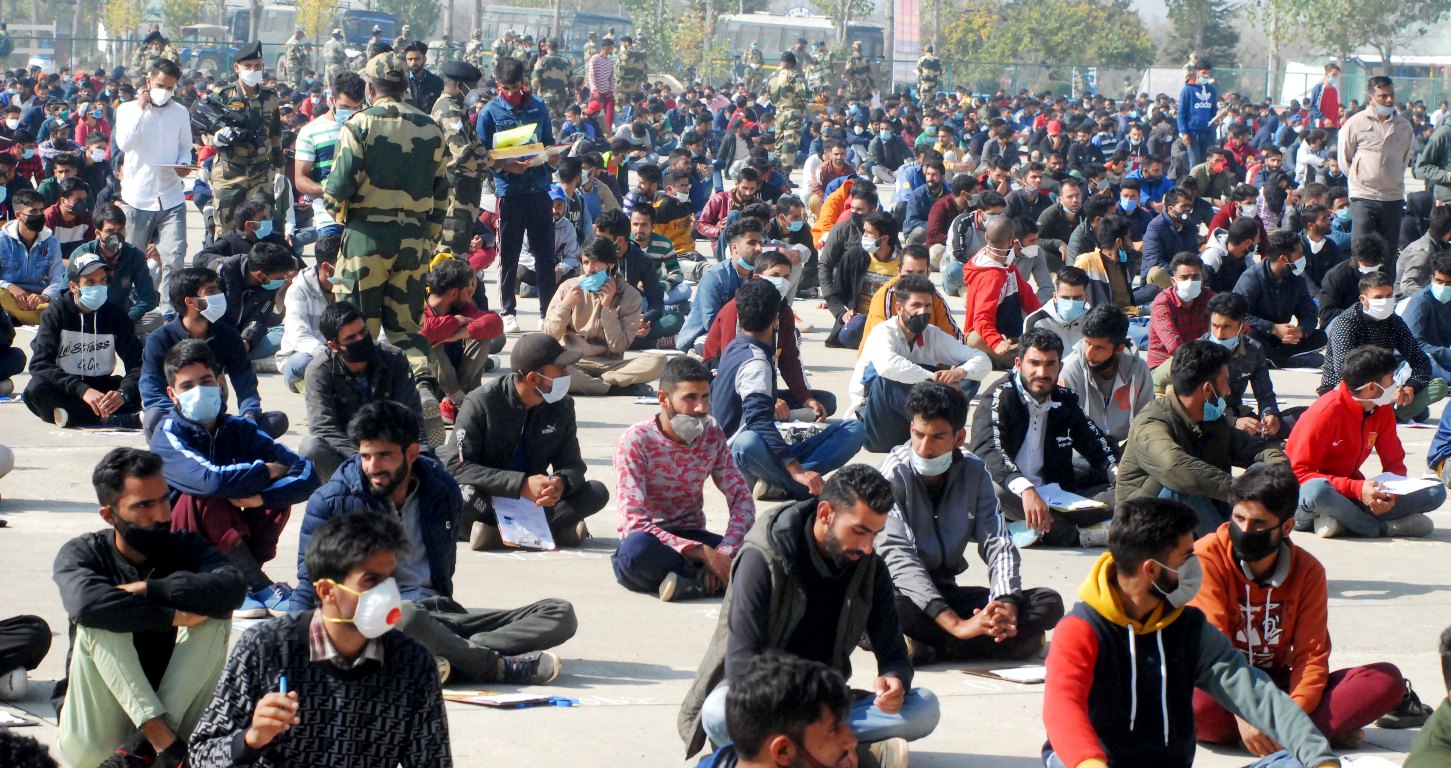by Syed Suhail Yaqoob
The data clearly shows that the state is going through population dividend. This provides a unique opportunity for us to grow, progress and develop. Open a book on economics and we will find that population dividend doesn’t continue for more than 15 years. After then the ageing will start and the opportunity to grow will be gone.

Last month, a workshop was hosted by Islamia College of Science and Commerce, a reputed college of Kashmir. The workshop was attended by commissioner/secretary to government higher education department (J&K) and Mission Director Atal Innovation Mission Additional Secretary NITI Aayog Government of India. Besides these, the vice-chancellor of Central University and principals of different colleges also attended the workshop.
The welcome address was provided by the principal of the Islamia College of Science and Commerce Prof Sheikh Ajaz Bashir who also highlighted the nature of IIIC’s and its importance in the valley. The presence of the influential people speaks itself of the importance of the workshop. The workshop’s main concern was to re-orient Kashmir’s present educational system, provide a space to the students to inculcate their own ideas and work on it. The main focus was on ‘innovation’ and ‘incubation’.
Anyone who is or has been associated with our educational system cannot deny that these steps are the need of the hour. Our present educational system is not only sluggish in its approach to students but is hierarchal as well. Furthermore, it rewards memory rather than intelligence. The system was sure to create many problems for our youth and it did.
It is no wonder that even after gaining many degrees our students are not able to find suitable jobs in the market. Jammu and Kashmir has the highest rate of ‘educated un-employment’ throughout India. According to official estimates, there are around 2.5 lakh educated youth who are not able to find suitable work and the numbers keep on increasing. Every year after year our system provides degrees to thousands of students with less probability of finding a job. Our labour force increases year by year with no jobs in sight.

The plight of the educated youth was imminent in an exercise carried out by the State Directorate of Employment. The governor’s administration has asked the concerned department to register the unemployed youth having post-graduation, M Phil or PhD degrees with employee exchanges. Within 15 days more than 1.5 lakh highly qualified youth got themselves registered. Our own Economic Survey Report of 2016 mentioned that the unemployment rate in Jammu and Kashmir is higher than the average national unemployment rate. The unemployment rate was 24.6 % in the age group (18-29) which is far more than 13 % at the all India level.
Moreover, India aspires to become 5 trillion-dollar economy by 2024. To reach the mark, it needs to evolve systems and mechanisms to convert the present demographic dividend into high quality technical human resource capable of doing cutting edge research and innovation and deep-tech entrepreneurship.

Jammu and Kashmir cannot lag behind to develop its economy. According to the latest estimates, the state is still agrarian in character although 56 per cent of its GDP is contributed by service sector however only 26 per cent is contributed by the industrial sector. It is here higher education through these centres can play an important role to evolve an industrial mindset in our youth. We need to move away from an agrarian economy to an industrialised one. Moreover, the situation is more critical in our state.
According to Census-2011 around 70% of our population is below 35 years of age. The data clearly shows that the state is going through population dividend. This provides a unique opportunity for us to grow, progress and develop. Open a book on economics and we will find that population dividend doesn’t continue for more than 15 years. After then the ageing will start and the opportunity to grow will be gone. It is important to tap the population dividend and our educational system has to play an important role in these critical times. This is where the higher education, through these centres, can play an important role.
Besides unemployment, the educational system provides little space for the students to improvise themselves. It is strictly based on rigidness and hierarchy. It is teacher-centric rather than student-centric. Here the will of the teacher is considered as ‘sacred’. His opinion is considered as ‘best’ and any deviation will attract punishment. We ‘train’ students rather than allow them to grow. Our system allows them to mug up study material rather than develop their mental acumen, capabilities and capacities. The educational system is a ‘one-way’ system. We rarely allow a participatory approach in our educational system.
No doubt the incubation and innovation centres will facilitate live campuses in Kashmir valley. No one will disagree that from our universities to colleges our campus life is dull. The incubation centres will throw a fresh soul into colleges. Kashmir is full of talent. We have Kalhana, Abdul Ahad Azad, Shams-Faqir, Mahjoor which is the testimony that talent is spatial in the valley. We just need to tap it and the incubation centres will provide us the space to do it. A look at the developed countries will reveal why their students are ahead of our students almost in every sphere. The ideas shared in the workshop shall be a leap forward to revolutionise our educational system.

The higher education has devised the policy which aims at creating IIIC’s in every college of the state. The objective is to promote and establish incubation centres in India which would support and encourage start-ups in specific subjects/sectors such as manufacturing, transport, energy, health, education, agriculture, water and sanitation etc. It also focuses on the establishment of AICs in underserved and unserved areas to support inclusive growth. The inclusive growth has remained on the agenda since 2011 however due to certain factors it is still an unachievable goal.
The institutional innovation and incubation centres have a special focus on the students. In India, innovation is hardly encouraged in higher education. However, IIC’s is hopefully and likely to change it. Through these centres, the students will get the first-hand experience in entrepreneurship, promote innovation-driven activities at the institute. The institute will provide a comprehensive and integrated range of support including space, mentoring, training programmes, networking and an array of other benefits. In addition to these, the students will gain hands-on experience in innovation and entrepreneurship while being nurtured and encouraged by faculty, management and industry experts.

Today in a fast-changing and integrated world, an incubation centre is equally essential just like a library or a place for physical activity. It will not only enable institutions to actively support their faculty, staff but also encourage students to participate in innovation and entrepreneurship (I&E) related activities, thus encouraging them and faculty to consider startups and entrepreneurship as a career option. Many times the students feel government job a necessary qualification in life, however, these centres have the capability to change this attitude. In order to achieve attitudinal shift and ensure that ‘innovation and startup’ culture is achieved, the higher education aims at establishing innovation and incubation centres in the colleges. This is surely the need of the hour. Furthermore, the centres aim to be the hub of innovative and high impact ventures in social, educational, commercial and other domains. It is sure to bring forth a revolution in how and what students learn and achieve while in college. The idea of Institutional innovation and incubation centre is surely a win-win situation.
In Kashmir, the idea will be more fruitful given high rates of unemployment, low economic growth and agrarian economy. However, it is important that these centres must try to solve the grass-root problems of the valley. Not only will it solve our social and economic issues but will also result in more inclusive and sustainable development.
(The author is pursuing PhD at Aligarh Muslim University in Economics with a focus on gender. The opinions expressed in this article are those of the author’s and do not purport to reflect the opinions or views of Kashmir Life.)















